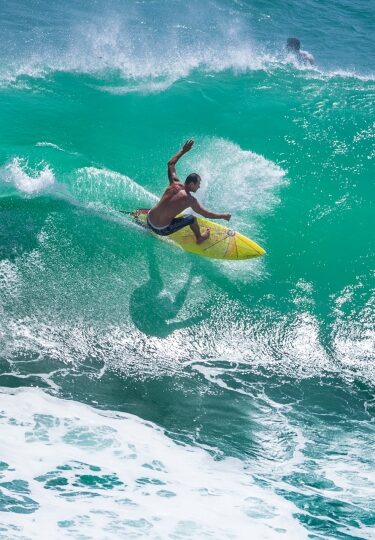With 70 percent of the world covered by water, there is no shortage of surf. Finding the best places to learn how to ride the waves is slightly more difficult.
Surfing is a sport where big waves grab the attention. We all thrill to those photos of daredevil men—and women—miraculously emerging from a breaking tube wave.
However, even in some of the world’s most spectacular surfing spots, there are places, and times, when the waves are more gentle. Places where, if only for a moment, you can first feel the thrill of riding the awesome power of an ocean wave.
Here are the 12 best places to visit to learn how to surf in the world.
Oahu, Hawaii
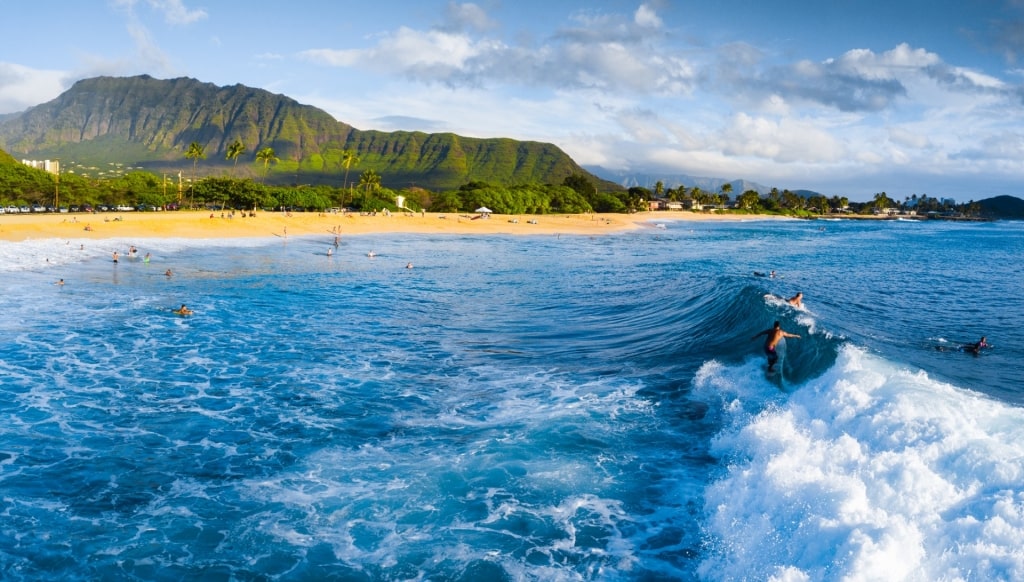
Makaha Beach in Oahu, Hawaii
You can’t think of surfing without Hawaii coming to mind. While its terrifying big waves are notorious, they are a feature of winter, so summer visitors can expect much gentler conditions.
Surfing literally began on Oahu, when Hawaiian royalty would show off their skills off Waikīkī Beach. The original Waikīkī Beach Boys, including the legendary Duke Kahanamoku, first taught their skills to visitors here.

Waikīkī Beach in Oahu, Hawaii
Their descendants still guide beginners onto the waves. With Waikīkī Beach being only 15 minutes from downtown Honolulu, they are never short of clients.
For somewhere less crowded than Waikīkī, move on the short distance to nearby Diamond Head Beach, one of Honolulu’s best beaches. Another quieter alternative is Ewa Beach on the west side of Pearl Harbor.
Hawaii is another destination where natural beauty is key to the surf experience. If you can relax enough to look up from your board, you’ll begin to understand why surfing has such a deep, almost spiritual hold on its followers.
Bali, Indonesia
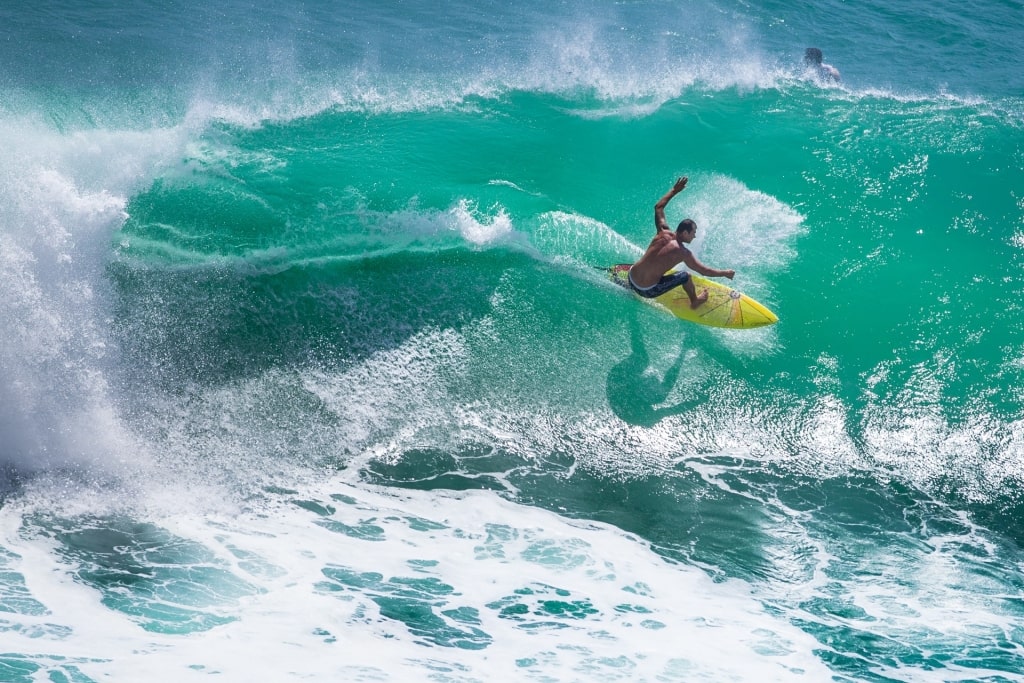
Bali, Indonesia
American photographer Robert Koke is credited with bringing surfing to Bali in the 1930s. The island’s Kuta Beach is now a regular stop on the World Surf League.
Bali’s blue seas, coral reef, volcanic peaks, and tropical vegetation are just some of the many reasons why it’s one of the best places to visit in Asia. The island’s temples add a strong sense of spirituality, and surfing amid such natural beauty can feel like an almost religious experience.
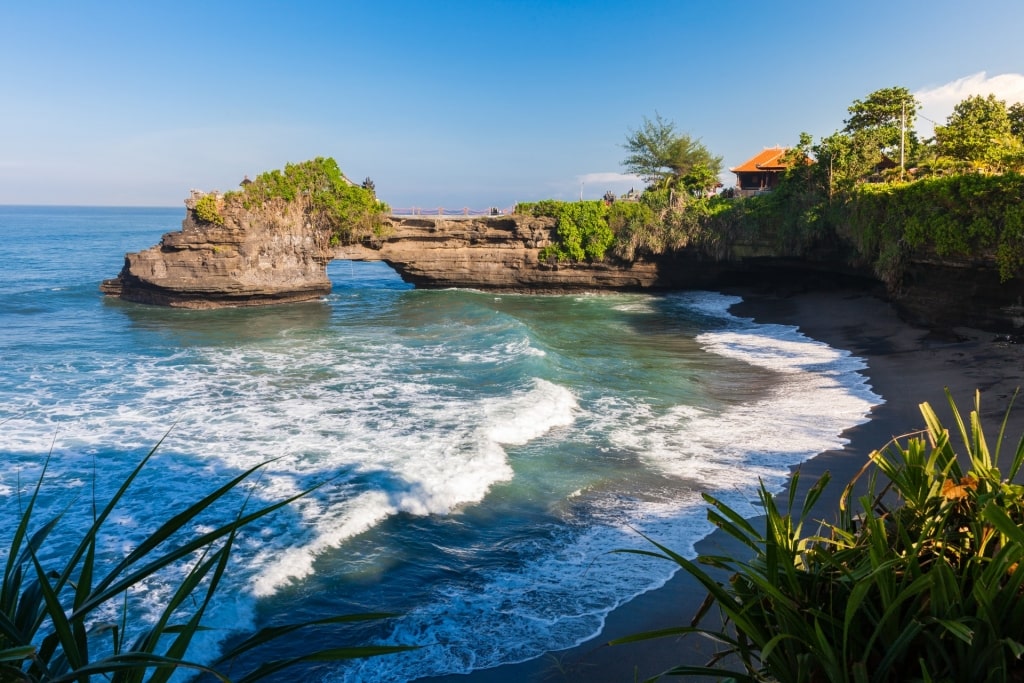
Batu Bolong in Bali, Indonesia
For beginners, there are plenty of surf schools around this Balinese beach, but you might prefer the quieter Batu Bolong, about 20 minutes away. This black sand beach is also well supplied with instructors for all levels.
Batu Bolong is part of Canggu, which has grown from a few surfers’ shacks into a fashionable beach resort. As well as surfing, you’ll also find plenty of yoga classes—almost essential for stretching before and/or after surf lessons.
San Diego, California
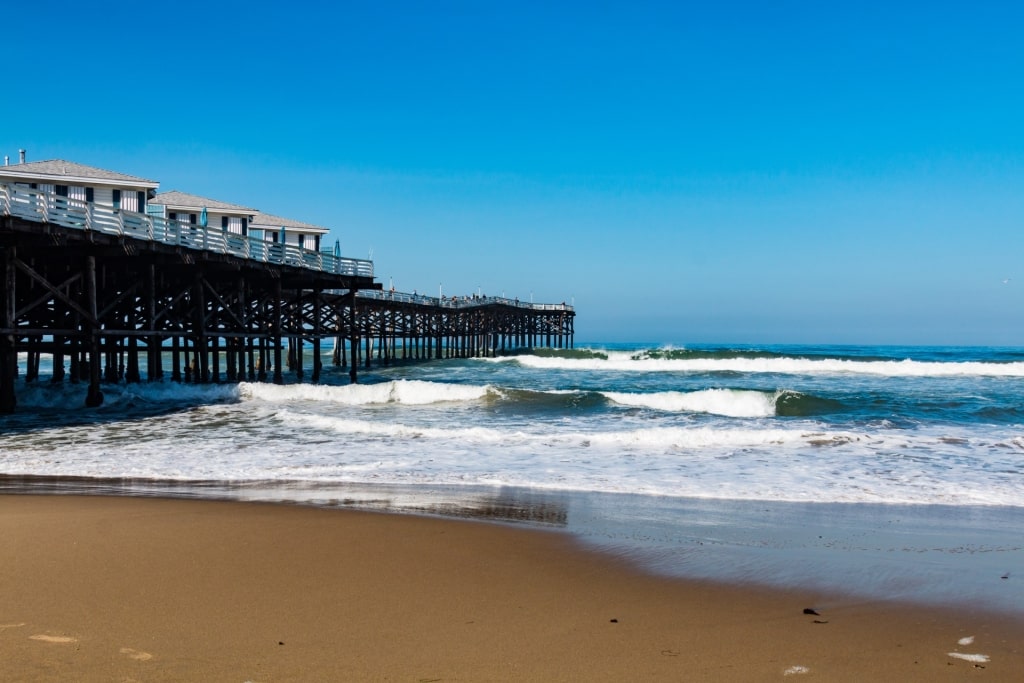
Pacific Beach in San Diego, California
San Diego has been part of surfing history since Hawaii’s Duke Kahanamoku first demonstrated his awesome skills here in 1916. It’s central to the SoCal (Southern California) area at the heart of American surfing, so much so it was repeatedly name-checked by the Beach Boys.
To get into California’s Pacific surf for yourself, the best place to start is Pacific Beach (known locally as “P.B.”). With reliably gentle surf, and a forgiving sandy sea floor, it’s perfect for your first ventures on, and off, a board.
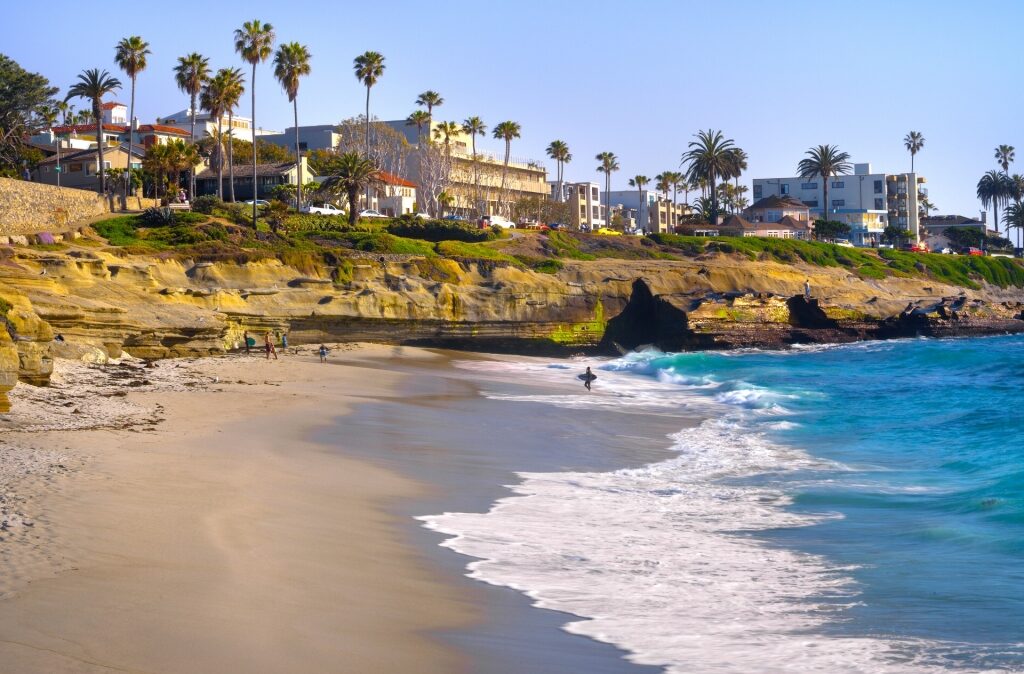
La Jolla in San Diego, California
La Jolla is perhaps the most famous spot on San Diego’s 30 miles of beachfront. Surf schools here include the female-friendly Surf Diva, among several other excellent choices.
Another good option here is to grab a bodyboard and get a feel for the surf. With a sandy sea floor, long beach breaks (meaning the waves break safely onshore), and numerous lifeguards, it’s a secure setting to learn the basics.
Read: One Day in San Diego: The Ultimate Itinerary
Lanzarote, Canary Islands
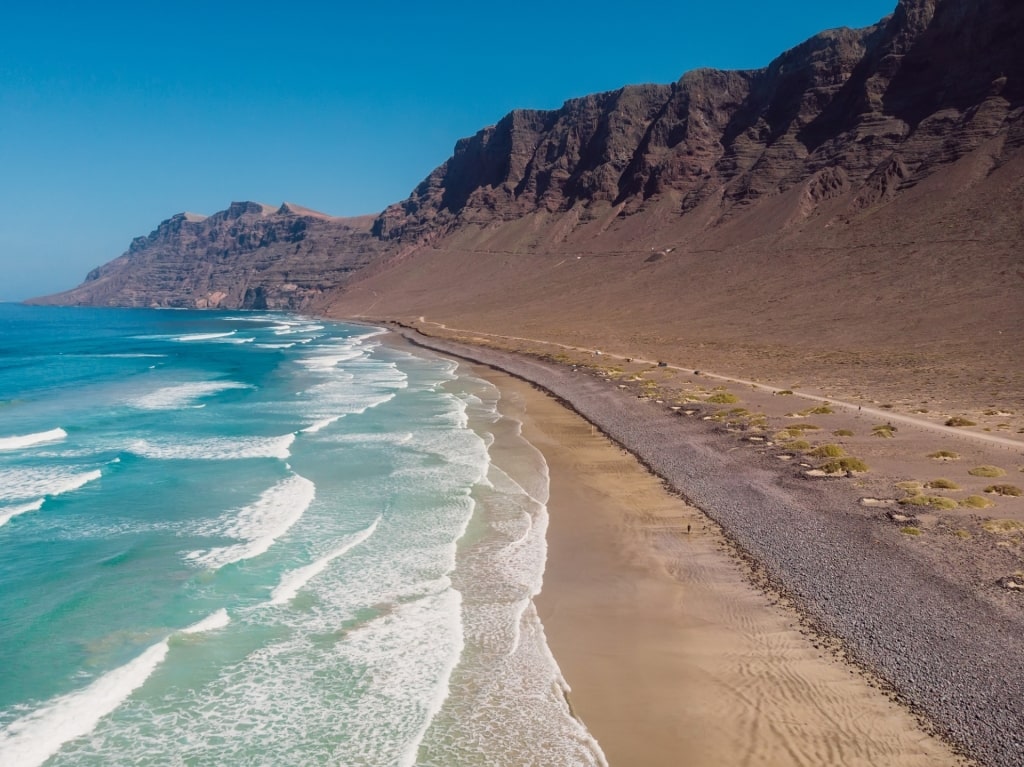
Famara Beach in Lanzarote, Canary Islands
With its waves rolling off the Atlantic, volcanic landscapes, and year-round sunshine, Lanzarote has been called the “Hawaii of Europe”. Fair enough, if you can imagine Hawaii with great Spanish food, and historic European settlements with names such as Montaña Roja or Mancha Blanca.
There are surf spots for all levels throughout the Canary Islands, but Famara Beach on Lanzarote is considered the best place to learn. With no rocks and three miles of golden sands, it also offers a good range of surfing schools.
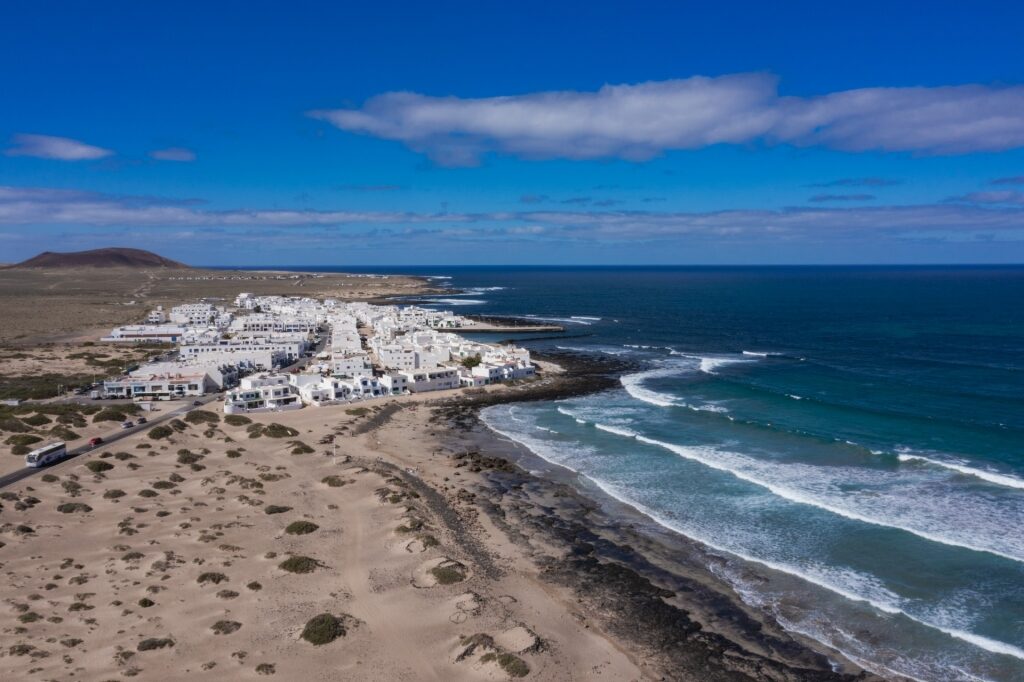
Caleta de Famara in Lanzarote, Canary Islands
The beach is next to the white-washed village of Caleta de Famara (Caleta means “little port”). This beautiful former fishing village is on the north coast, about 30 minutes from Arrecife.
Another good place to learn to surf is Playa de Orzola on the north of the island. It’s not as sheltered as Caleta, however, so high winds can be an issue.
East Coast, Barbados
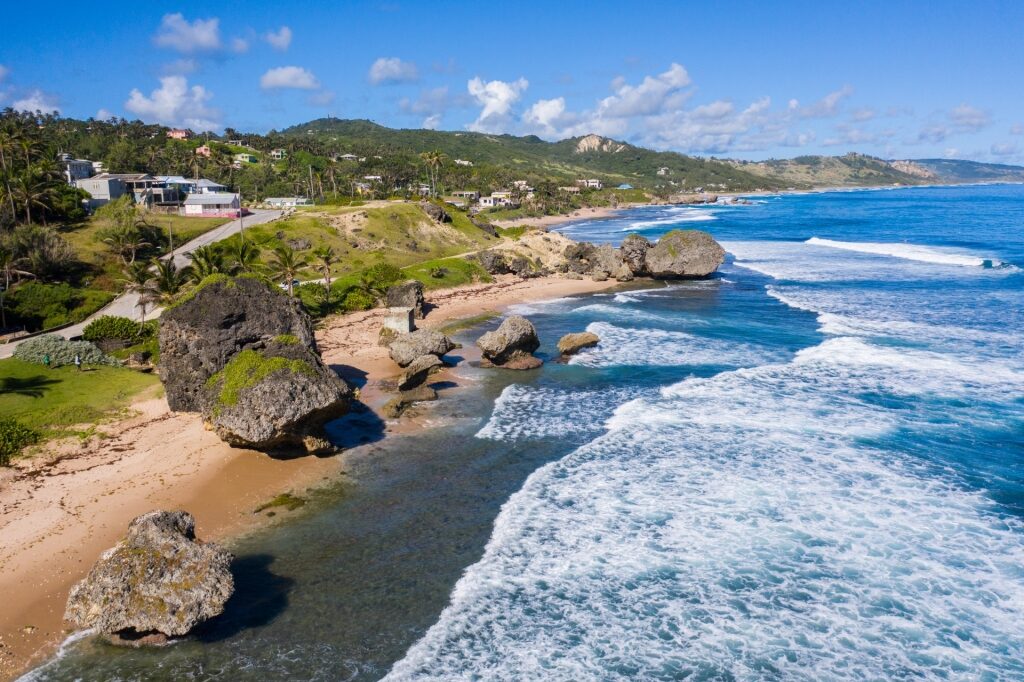
Bathsheba Beach in East Coast, Barbados
Barbados has a strong reputation as a top Caribbean surfing destination. That’s a competitive field, where it’s up against the likes of Puerto Rico or the Dominican Republic.
Protected by a coral reef, the island of Barbados has beginner-friendly surf in many places along its east and south shores. Even the famous “Soup Bowl” near Bathsheba—a favorite of pro surfer Kelly Slater—has its quiet moments.
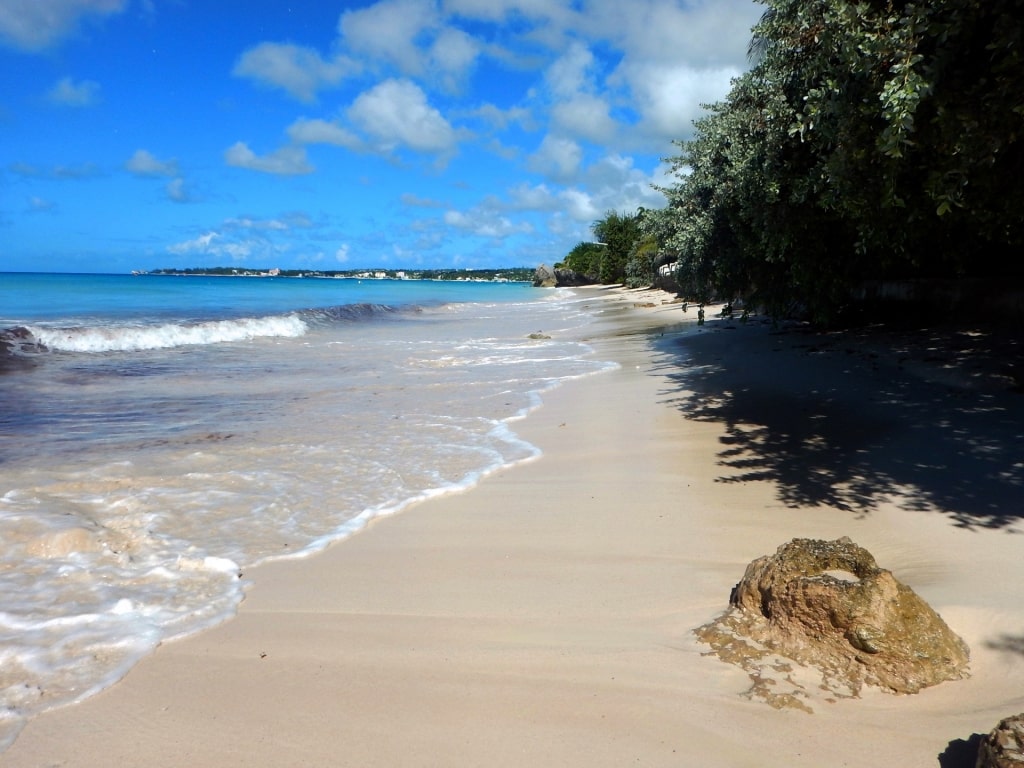
Freights Bay, Barbados
However, Freights Bay stands out for its perfect waves and abundance of surf schools. Even better, it’s only 30 minutes from Bridgetown along the east coast.
Freights lies in a sheltered bay, and has a consistent long left break—perfect for beginners. There are some rocks, and sea urchins, but a good instructor will keep you well away from any risky spots.
South Coast, Sri Lanka
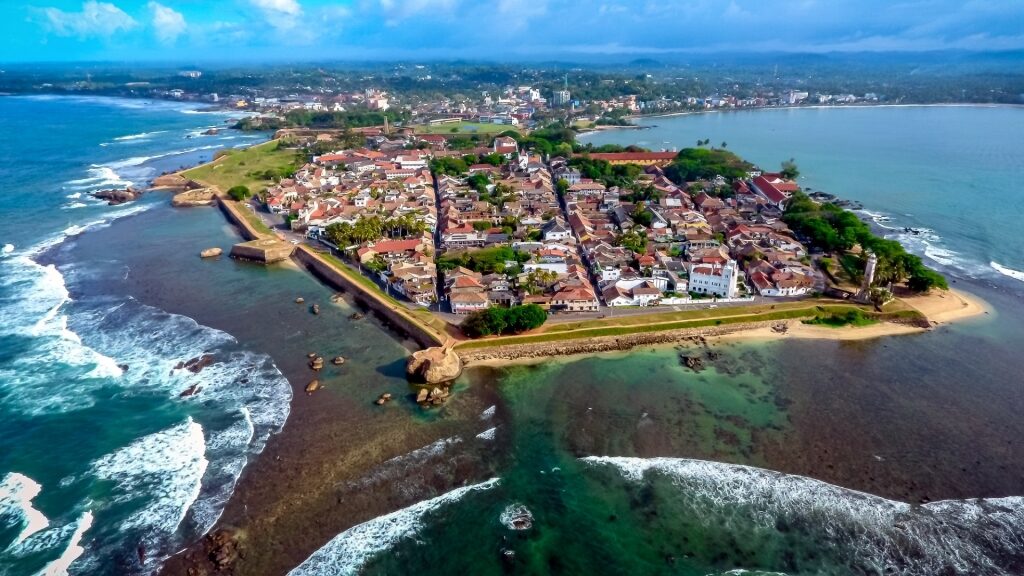
Galle in South Coast, Sri Lanka
You may not associate Sri Lanka with surfing but, with its myriad attractions, are you really surprised that surfing is another one? The south coast, just east of the famous town of Galle, is the place to go for beginner lessons.
Galle is known for its diving, and the clear waters along this coast are at their best during the dry season. From November through April, the lack of rain means less run-off to muddy the waters.
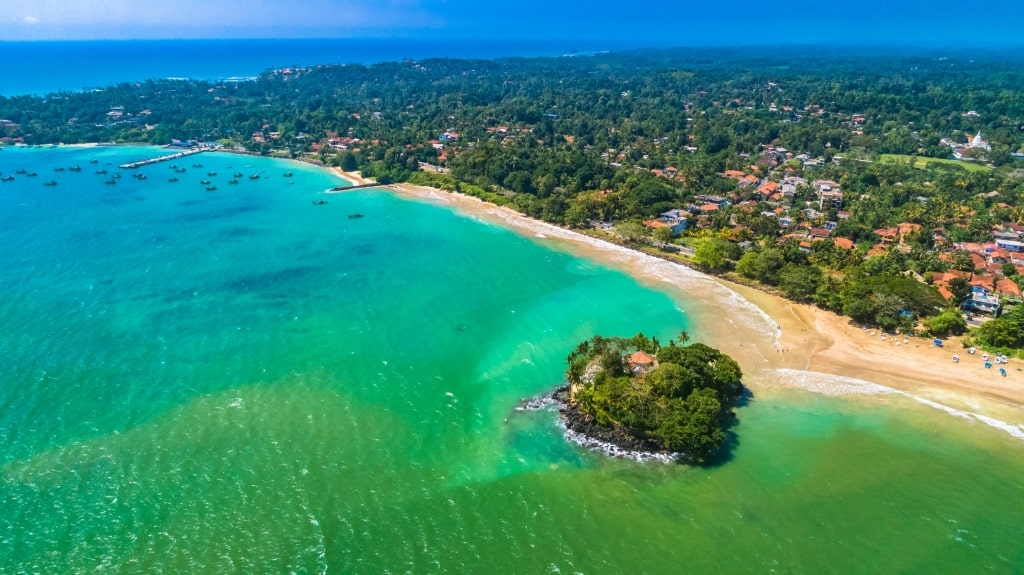
Weligama in South Coast, Sri Lanka
Novice surfers head to the beaches at Weligama, and nearby SK Town, about 90 minutes from the port at Hambantota. Weligama sits at the head of a deep, sheltered bay, behind a two-mile-long beach lined with surf schools, bars, and resort hotels.
Around a rocky headland is the resort of Mirissa, noted for its nightlife, and dolphin and whale watching. With its more challenging waves, it’s also a good place to move onto as your surf skills improve.
Mundaka, Spain
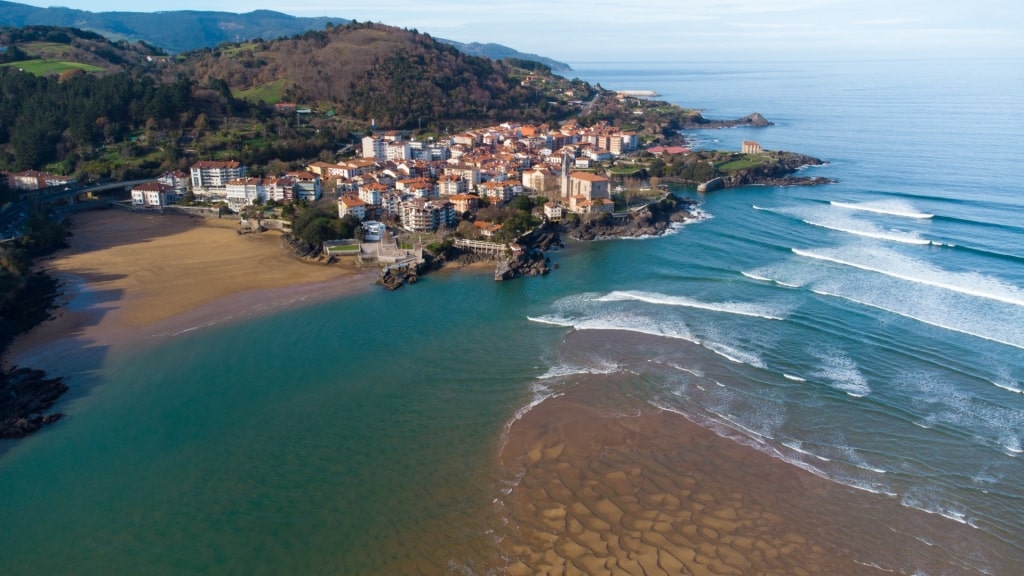
Mundaka, Spain
The Basque town of Mundaka, just north of Bilbao, was once known as “Europe’s Surfing Capital”. That’s because of a famous 12-foot-high, 300-yard-long surf break where its outgoing river, and offshore winds, meet high tides.
That may sound very intimidating for a beginner but, at low tide in summer, Laida Beach, near the estuary mouth, is a much friendlier option. Those low tides mean there are only two windows a day for lessons, though.
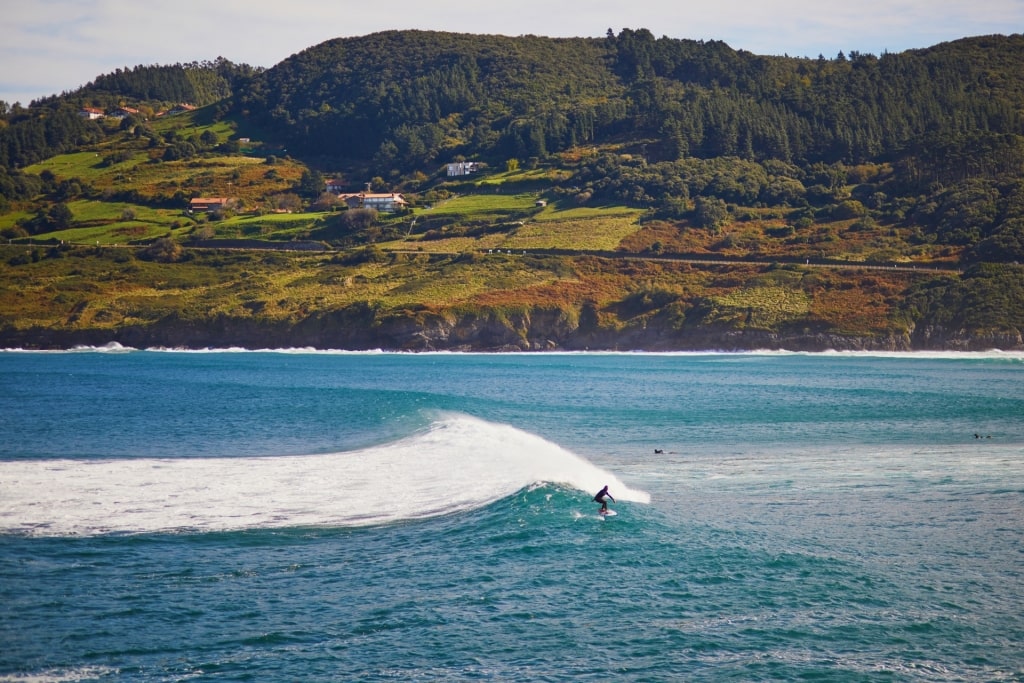
Mundaka, Spain
Once you have more confidence, you can move on to the beach at Txorro. Barra Beach, nearer that big break, is only for advanced surfers, even in summer.
Formerly a fishing village, Mundaka is now really all about surfing. It’s a beautiful place to immerse yourself fully in the culture and lifestyle of the sport.
Sydney, Australia
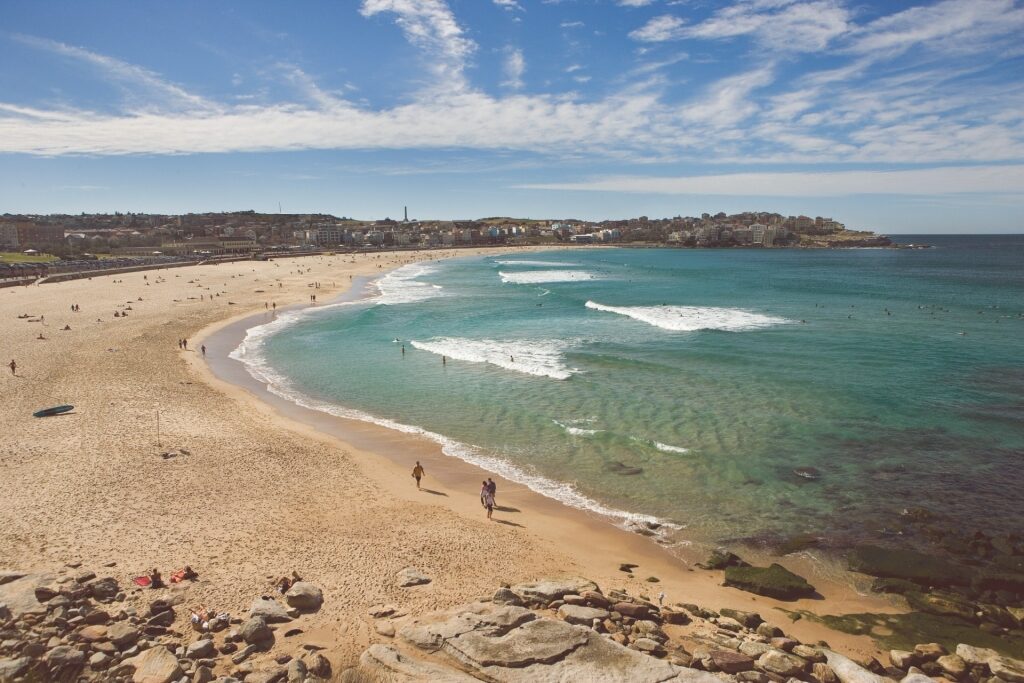
Bondi Beach in Sydney, Australia
No first-time visitor to Sydney should miss seeing Bondi Beach. While you’re there, why not enjoy a surf lesson on one of the world’s most famous beaches?
Bondi is usually packed with surfers, bodyboarders, and swimmers. You’ll find plenty of surf schools, including Let’s Go Surfing, which famously started out of a VW Kombi van in the 1990s.
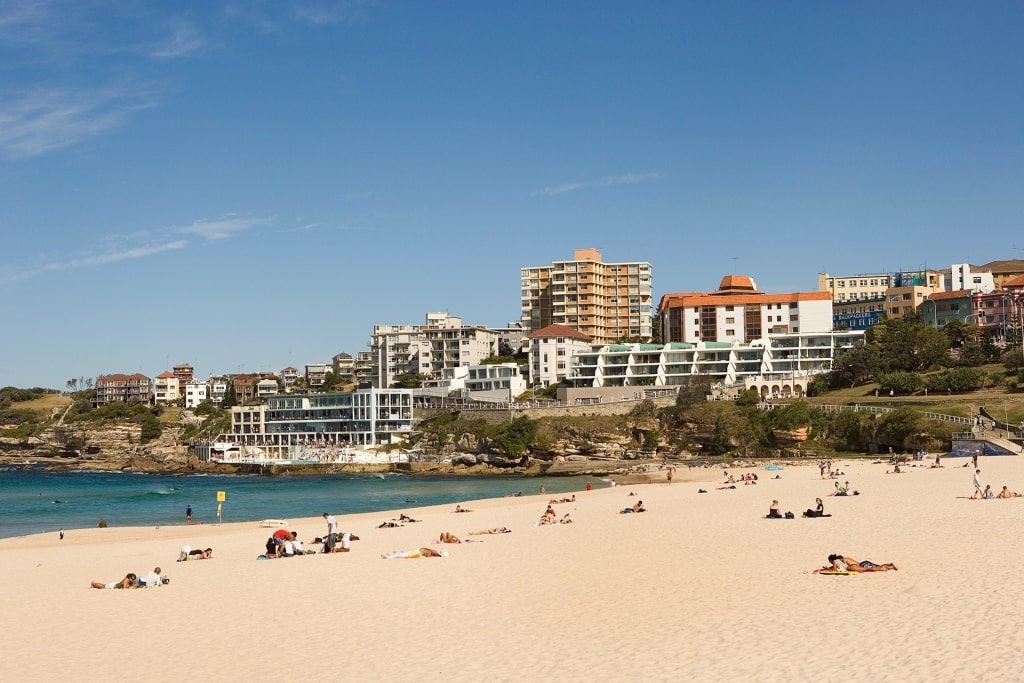
Bondi Beach in Sydney, Australia
The water is colder than you expect, but a wetsuit makes the two-hour lessons bearable. As a beginner, you’ll avoid the southern end of the beach, where you’ll see experienced surfers showing off their skills.
Waves are consistent, and the north end of the beach is protected by Ben Buckler headland. That’s a perfect place to enjoy a first taste of the Australian surfing scene.
Papeete, Tahiti
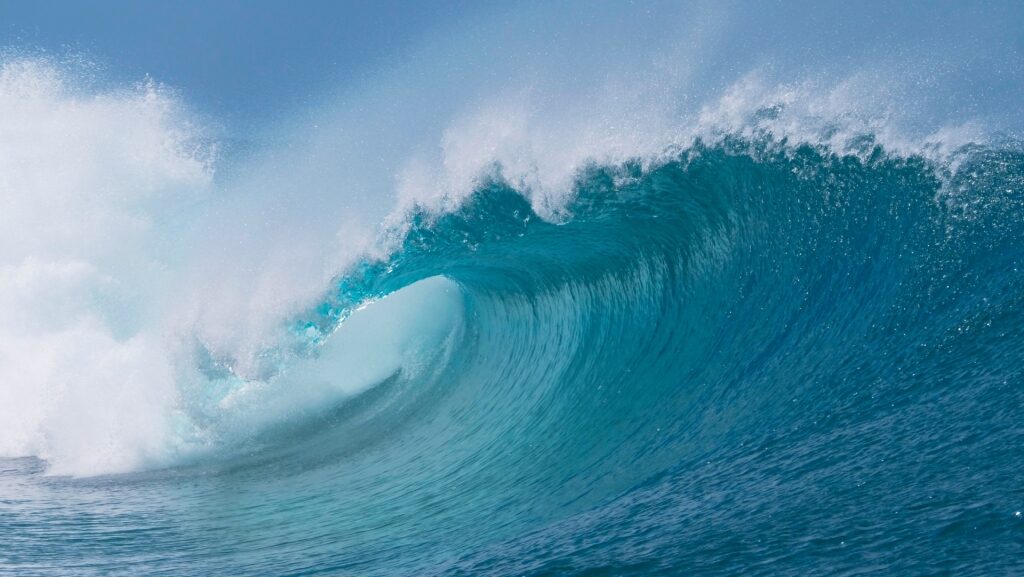
Papeete, Tahiti
Surfing is thought to have originated in Polynesia before it was brought to Hawaii, so its most iconic island, Tahiti, seems like a great place to learn. Among the many other attractions are waters that stay about 80ºF year-round, and the amazing South Sea scenery.
Tahiti has more than 30 surfing spots, among which are several that attract the world’s best surfers. For beginners, the North Shore offers a choice of quieter breaks such as the River Mouth in Papeno’o, or Ahonu.
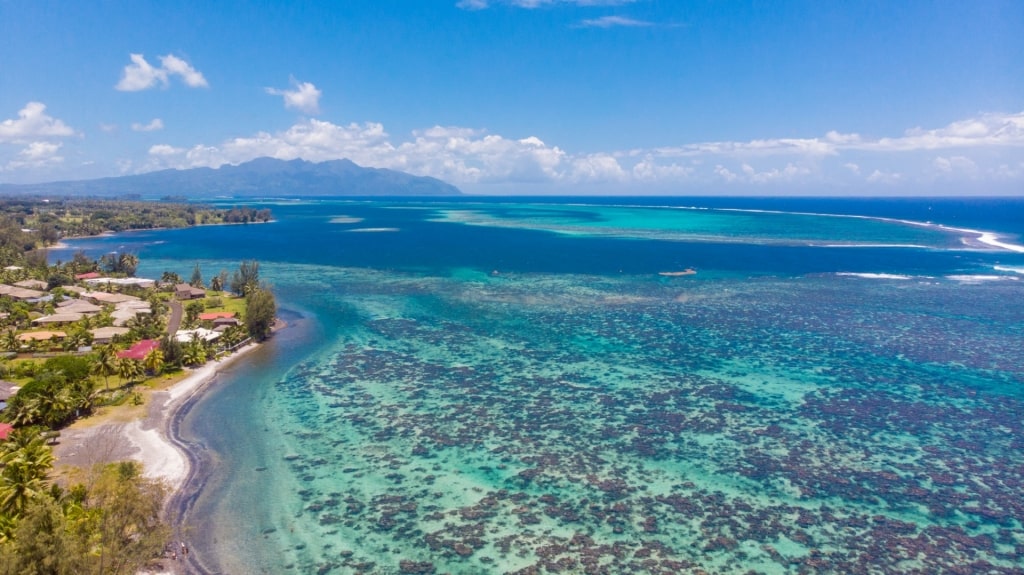
Papara Beach in Papeete, Tahiti
Another choice is the sandy-bottomed Papara, on the South Shore. It’s another beach break, making it much safer for beginners.
There are several good surf schools that will outfit you with the right board, and take you to the best beach. Conditions vary from day to day, so it’s important to have local knowledge as a novice.
Read: Best South Pacific Islands to Visit
Ericeira, Portugal
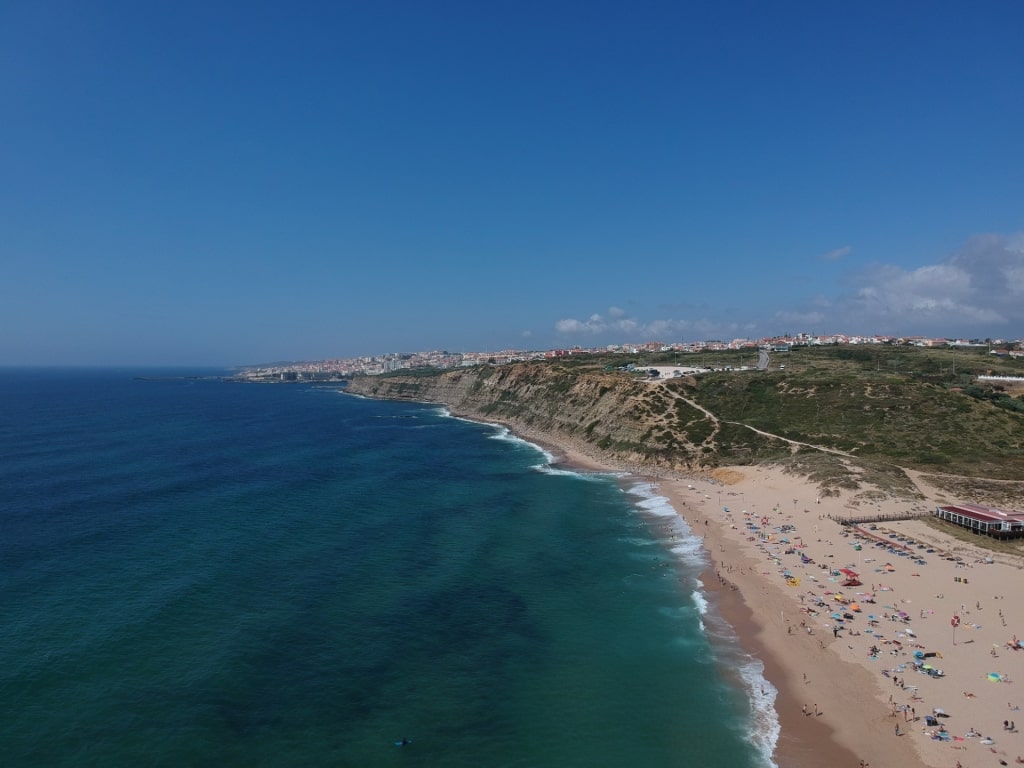
Foz do Lizandro Beach in Ericeira, Portugal
Sitting on the Atlantic, some 45 mins from Lisbon, Ericeira offers year-round surfing. While the water is chilly (you may need a wetsuit), the good news is the best beginner surf is during summer, when water temperatures hit the high 60s.
One of the best beach towns in Portugal, Ericeira has been named a World Surfing Reserve, and hosts major surf competitions. A Blue Flag award recognizes the beach cleanliness and good water quality.
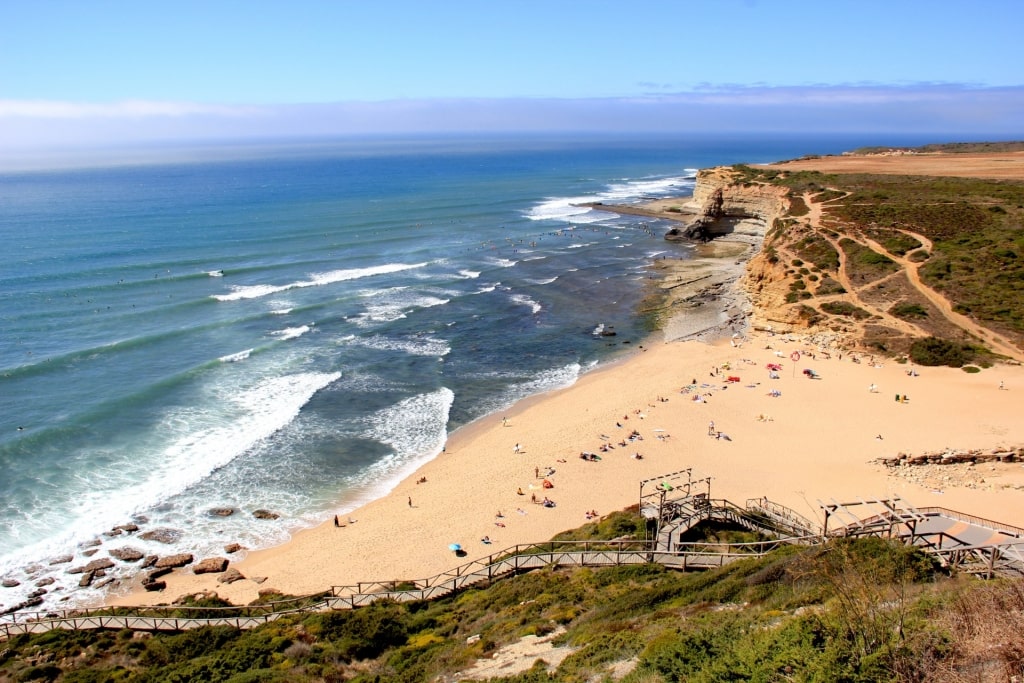
Ribeira d’ilhas in Ericeira, Portugal
Foz do Lizandro beach is great for total beginners, as it’s shallow, and sandy at low tide. With a few more lessons under your belt, you might try Praia do Sul or Ribeira d’ilhas.
Ribeira has a rocky bottom, but a pair of booties will protect your feet. It has excellent long waves that will really help you progress.
Cork, Ireland
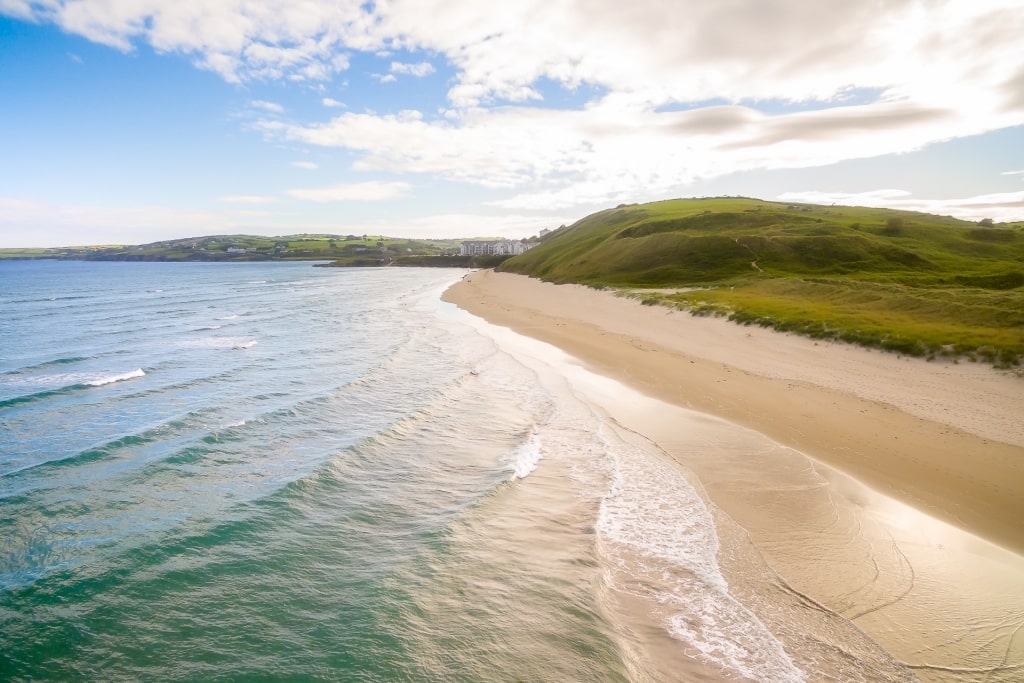
Inchydoney in Cork, Ireland
Once you get your head around the idea that it’s going to be cold, the Atlantic waves off Ireland’s southwest coast offer a thrilling ride. A good wetsuit will keep the chill at bay as you learn amid some spectacular scenery.
The Blue Flag beach of Inchydoney, about an hour from Cork, is a good option. There are lessons all year round but, obviously, they are more popular in summer.

Garretstown in Cork, Ireland
Garretstown, just over 30 minutes from Cork, is another good location. As at Inchydoney, the surf schools will supply everything from boots and hoods to gloves to make sure you can enjoy the lesson.
The sheltered bays at both beaches offer small but consistent waves, perfect for learning on. A great advantage of learning to surf in Ireland is that you don’t need to worry about all that infamous Irish rain, as you’re going to be wet anyway.
Gold Coast, Australia
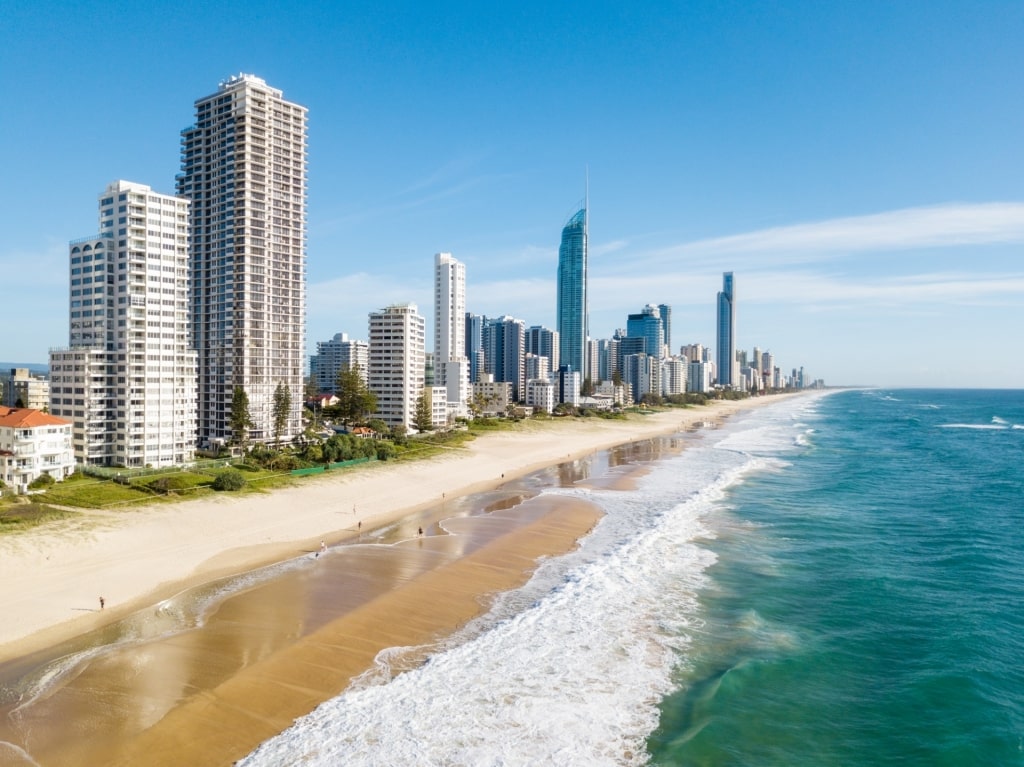
Surfers Paradise in Gold Coast, Australia
Spend enough time in Queensland, and you’ll begin to think everyone is a surfer. You can fit right in with a few lessons on the Gold Coast, 90 minutes south of Brisbane.
Originally known as the South Coast because of its location, this resort town was renamed for its soaring property prices. However, many people believe it’s so-called because of its sunny weather and golden beaches.
The city has more than 40 miles of coastline, with beaches ranging from busy urban strands to remote, wilder stretches. The aptly named Surfers Paradise is among the most famous ones.
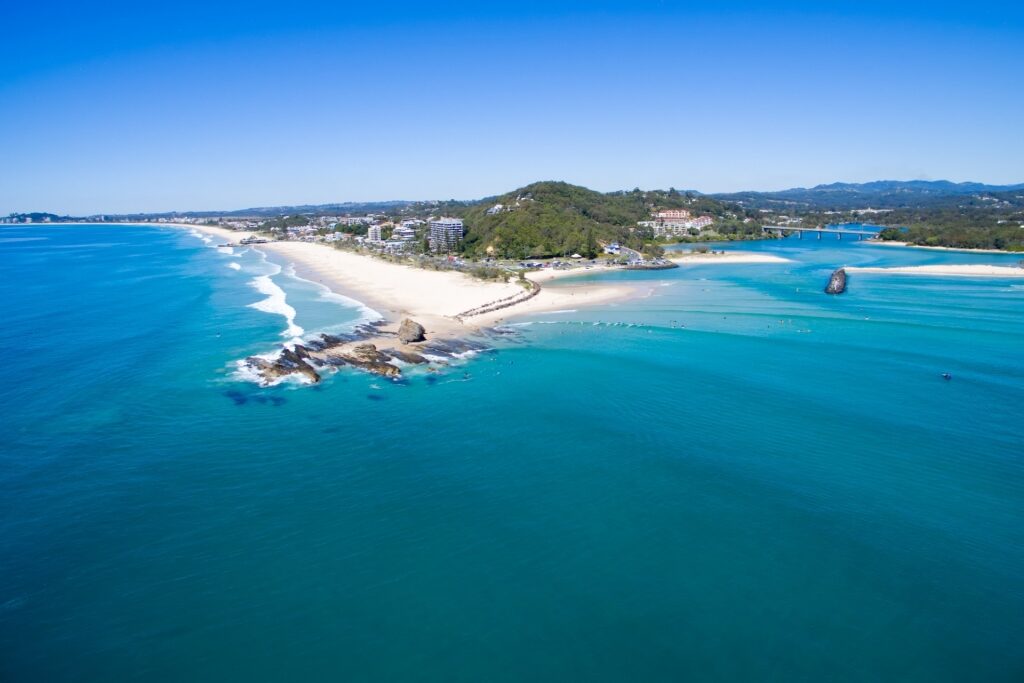
Currumbin Alley in Gold Coast, Australia
You can take lessons on Surfers Paradise, but a better option is Currumbin Alley. The “Alley” has more consistent waves, and is well sheltered from onshore winds for year-round surf lessons.
After a few lessons, you’ll start to fit right into a place where surfing seems an essential part of the culture. Surf shops abound, surf clothing is the norm, and surfboards or boogie boards adorn almost every café wall.
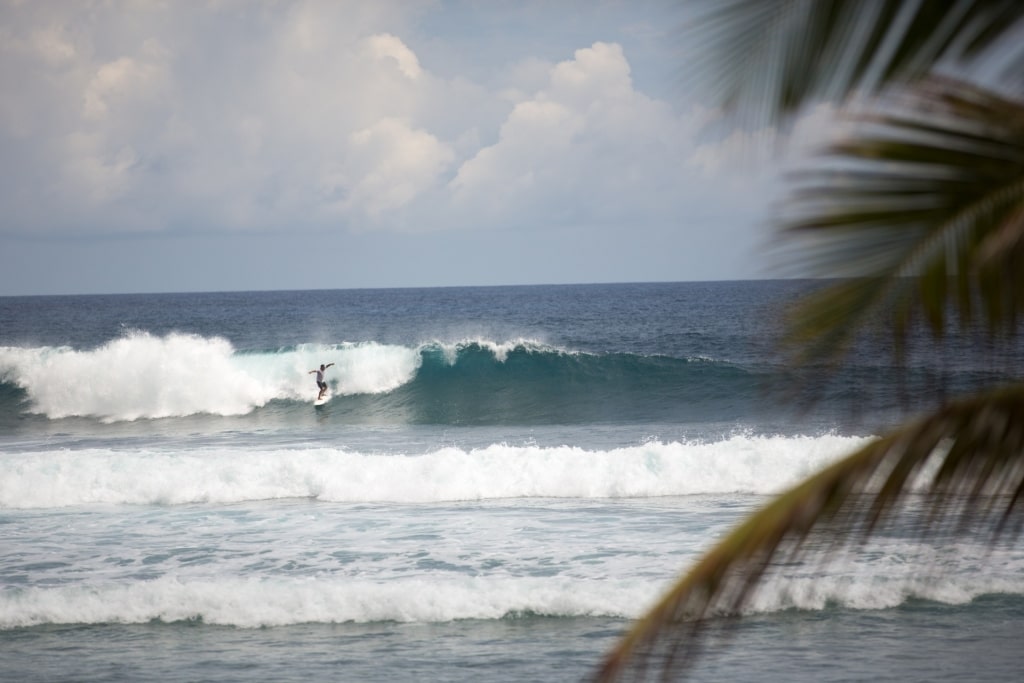
Bathsheba Beach in East Coast, Barbados
Has this list of the world’s best places to learn how to surf given you the urge to “hang ten”? Then browse Celebrity’s worldwide cruise itineraries to find the perfect spot to start your surfing adventure.
